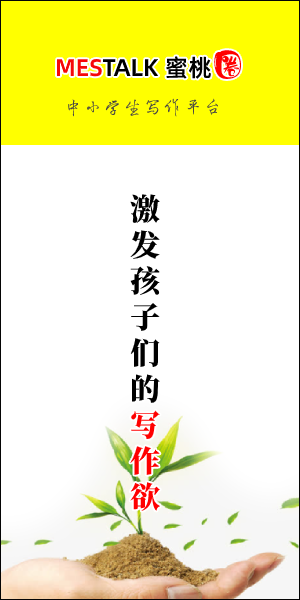首页 >
软舌螺动物门
✍ dations ◷ 2025-12-10 08:36:13 #软舌螺动物门
软舌螺动物(学名:Hyolitha)是生活在古生代的一类神秘动物,具有小圆锥形的螺壳。这些物种目前都已全部灭绝;其化石一般只能保存锥壳、口盖和附肢三个部分,外壳为钙质成分,两侧对称。根据形态学的分类,本物种是一类海生有壳的无脊椎动物,但再具体一点的分类众说纷纭:近期以软组织化石分析发现软舌螺动物具有触手冠 (Lophophore) 这种进食器官,指出软舌螺动物其实应该独立为一门,而且和包含腕足动物门在内的触手冠动物 (Lophophorata) 较相近。软舌螺动物的碳酸钙质外壳很大可能是由霰石组成。
有口盖(英语:operculum)保护,还有两条又名海伦体的弯弯附肢(helens)去支撑身体,以边缘增生(英语:marginal accretion)的形式成长。
体长一般在一公分到四公分,横切面呈三角形或椭圆形。部分物种有环纹或条纹。原状壳具有带横向束微结构的内层和包含纵向束的外层。本物种的附肢叫作“海伦体”,
Helens are long structures that taper as they logarithmically coil gently in a ventral direction.The helens were calcareous, with an organic component, and had an organic-rich central core surrounded by concentric laminae of calcite. They grew by the addition of new material at their base, on the cavity side, leaving growth lines.
They were originally described by Walcott as separate fossils under the genus name Helenia, (Walcott's wife was named Helena and his daughter Helen); Bruce Runnegar adopted the name helen when they were recognized as part of the hyolith organism.口盖(英语:operculum)紧紧的把壳关闭。
The operculum closes perfectly over the aperture of the shell, leaving two gaps through which the helens can protrude.It comprises two parts: the cardinal shield, a flat region at the top of the shell; and the conical shield, the bottom part, which is more conical.The inside of the shell bears a number of protrusions, notably the dorsal cardinal processes and the radially-arranged clavicles.人们依据有无口唇将软舌螺动物门动物分成两个目:Hyolitha have dorso-ventrally differentiated opercula, with the ventral surface of the shell extending forwards to form a shelf termed the ligula.The Orthothecida are somewhat more problematic, and probably contain a number of non-hyoliths simply because they are so difficult to identify with confidence, especially if their operculum is absent.They have a straight (planar) opening, sometimes with a notch on the bottom side, and sealed with an operculum that has no ligula, clavicles, furrow or rooflets.Hyptiotheca is an unusual hyolithid, in that it lacks clavicles.Orthothecids fall into two groups: one, the orcothecida sensu stricto,is kidney or heart shaped in cross-section due to a longitudinal groove on its ventral surface, and its opercula bear cardinal processes; the other has a rounded cross-section and often lacks cardinal processes, making them difficult to distinguish from other cornet-shaped calcareous organisms.All were sessile and benthic; some may have been filter feeders.Because hyoliths are extinct and do not obviously resemble any extant group, it is unclear which living group they are most closely related to. They may be molluscs; authors who suggest that they deserve their own phylum do not comment on the position of this phylum in the tree of life.Their grade of organization is considered to be of the 'mollusc-annelid-sipunculid' level,consistent with a Lophotrochozoan affinity, and comparison is usually drawn with the molluscs or sipunculids.Older studies (predating the Lophotrochozoan concept) consider hyoliths to represent a stem lineage of the clade containing (Mollusca + Annelida + Arthropoda).软舌螺可能是底栖生物。
寒武纪软舌螺是全球分布,没有迹象显示有地区差异,有迹象显示软舌螺有长寿命浮游幼虫生活期;但在奥陶系不同的组合变得越来越普遍。最早的软舌螺壳体化石大约出现在5亿4000万年前的西伯利亚 Purella antiqua Zone 的Nemakit-Daldynian阶,其类似物发现于中国Paragloborilus subglobosus–Purella squamulosa Zone 的 梅树村阶(寒武纪第一个阶)。。软舌螺动物门物种无论在其数量及其多样性都在寒武纪达至巅峰,之后逐步递减,直到灭绝。
相关
- 腮腺炎腮腺炎(Parotitis),俗语称猪头皮,是指一个或两个腮腺(人类脸颊两旁的主要唾腺)发炎的疾病。腮腺是唾腺中最经常发炎的一个部位。目前已知最常造成细菌性腮腺炎的是金黄色葡萄球菌(S
- 嗜热链球菌Streptococcus salivarius subsp. thermophilus (Orla-Jensen, 1919) Farrow et Collins 1984嗜热链球菌(拉丁学名 Streptococcus thermophilus)为革兰氏阳性细菌,同型发酵(homo
- Open Directory Project开放目录项目(英语:Open Directory Project,又称Directory of Mozilla,简称DMOZ),是网景(Netscape)所主持的一项大型公共网页目录。它是由来自世界各地志愿者共同维护与建设的全球最
- 排泄物排泄物指一生物的消化系统中任何排泄的固体或液体,通常指人类的。因此它最常被指为尿液和粪便,是这些词语的委婉说法。它在医疗说法中最常出现。虽然日常生活所指的“排泄”包
- 芬兰语芬兰语(suomi, 发音 帮助·信息),也称芬兰文,是芬兰大部分(88.3%,2016年底)居民的母语,也被境外芬兰裔侨民所用。它是芬兰的两种官方语言之一,也是瑞典的一种法定少数族裔语言。芬兰
- 雌雄同体在生物学上,雌雄同体(英语:Hermaphrodite (plant) 、Intersexual (human being)),又称雌雄不分相,是指同时有雄性和雌性的生殖器官、第二性征。人类的雌雄间性情况称为双性人。在
- 树液树液是指植物韧皮部输送的流体物质,这些物质提供了整株植物的生长所需的水分和养分。树液和乳胶、树脂不是同一物体。树液分为木质部树液和韧皮部树液两种。许多动物都以吸食
- 格尔德·宾宁格尔德·宾宁(德语:Gerd Binnig,1947年7月20日-),德国物理学家,扫描隧道显微镜和原子力显微镜的发明者之一,1986年获得诺贝尔物理学奖。1947年,格尔德·宾宁出生在法兰克福,他回忆说:“
- 运河运河是指人工开凿的规模比较大的、可以使水流流过的运输通道。运河通常连接湖泊、河流和海洋,或横贯半岛、地峡而造。相传在四千年前美索不达米亚已有开运河,但具体难以考证。
- 目的“目标”是一种个人或是系统想要达到的结果,而且会为此计划,设法达成。目标是个人或组织在某种理想状态下希望达到的状态。有时目标会有其期限(英语:time limit),因此还需要在期限
